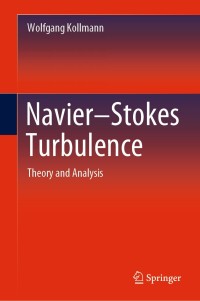Consider an analytic functional (R[y]) defined on the phase space (Omega=) (left{y(mathbf{x}) in L_{R^{3}}^{2} ight}, mathbf{x} in
Question:
Consider an analytic functional \(R[y]\) defined on the phase space \(\Omega=\) \(\left\{y(\mathbf{x}) \in L_{R^{3}}^{2}\right\}, \mathbf{x} \in R^{3}\) and Gaussian stochastic fields \(f_{i}(t, \mathbf{x})\) with zero mean and positive definite correlation tensor defined by
\[ K_{i, j}\left(t, t^{\prime}, \mathbf{x}, \mathbf{x}^{\prime}\right) \equiv\left\langle f_{i}(t, \mathbf{x}) f_{j}\left(t^{\prime}, \mathbf{x}^{\prime}\right)\rightangle \]
Prove the relation
\[ \left\langle f_{i}(t, \mathbf{x}) R[f]\rightangle=\int d t \int_{R^{3}} d v K_{i, j}\left(t, t^{\prime}, \mathbf{x}, \mathbf{x}^{\prime}\right)\left\langle\frac{\delta R}{\delta f}\left[f ; t^{\prime}, \mathbf{x}^{\prime}\right]\rightangle \]
for homogeneous Gaussian fields in isotropic turbulence.
Step by Step Answer:

Navier Stokes Turbulence Theory And Analysis
ISBN: 9783030318697
1st Edition
Authors: Wolfgang Kollmann





